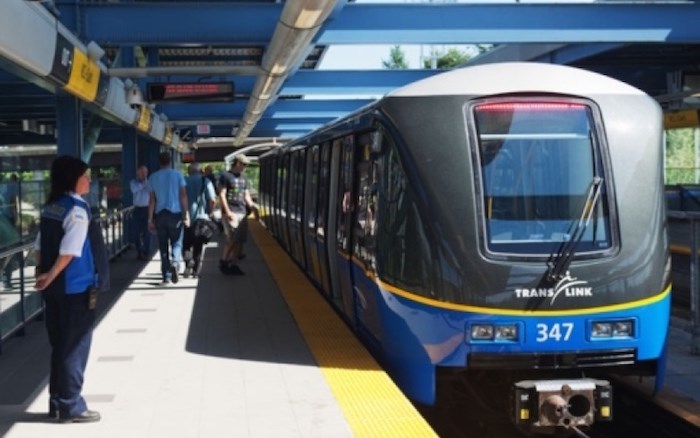A public transit system needs to not only serve the current population, but also focus on sustainability. Transportation represents 24 per cent of greenhouse gas emissions in Canada, according to a 2015 report, (it's 30 percent in the U.S.) which is why cities like Vancouver are looking to their transit systems as one sector in which they can improve their emissions.
 SkyTrain. File photo
SkyTrain. File photo
A recent study released by the U.S.-based Institute for Transportation and Development Policy takes a look at current Indicators for Sustainable Mobility in 25 North American cities.
Using data from transit agencies and the census, ITDP looks at current practices of biking and working to work, as well as proximity to public transit access points for residents. Additionally, the report analyzes transit in cities in relation to connectivity to work and other people, along with contributing factors like income, and the threshold of time transit trips to and from work take.
Coming in just behind New York City, Vancouver ranks second overall when it comes to the percentage of the city's population that lives within a 10-minute walk of a frequently-served transit stop of some kind, at 90 per cent. (New York is 93 percent). "Stops are defined as frequent if they are served an average of five times an hour (around a 12-minute headway) from 7 a.m. to 9 p.m. on a weekday, and include rapid transit stations," explains the report.
An impressive 52 per cent of Vancouver bikes or walks to work, on par with other Canadian cities Toronto and Montreal; comparatively some U.S. cities like Nashville have only four per cent of their population getting to work on foot or transit.
The study, which did not have access to data for income or employment for Canadian cities, also does not factor the population living in the full Metro Vancouver region, which would certainly skew the results as far as access to and use of transit. Commuters who make the trek in daily from Surrey, White Rock, Langley, Coquitlam, Delta, and other communities often have to drive to their point of access, or take trips that exceed a 60-minute threshold.
Still, it's encouraging to see Vancouver - the city that's been working on being the Greenest City by 2020 - walk the walk, so to speak, when it comes to sustainable transit. The City of Vancouver outlines progress and plans regarding Green Transportation online, and the full ITDP Indicators for Sustainable Mobility report can be downloaded for further reading.


